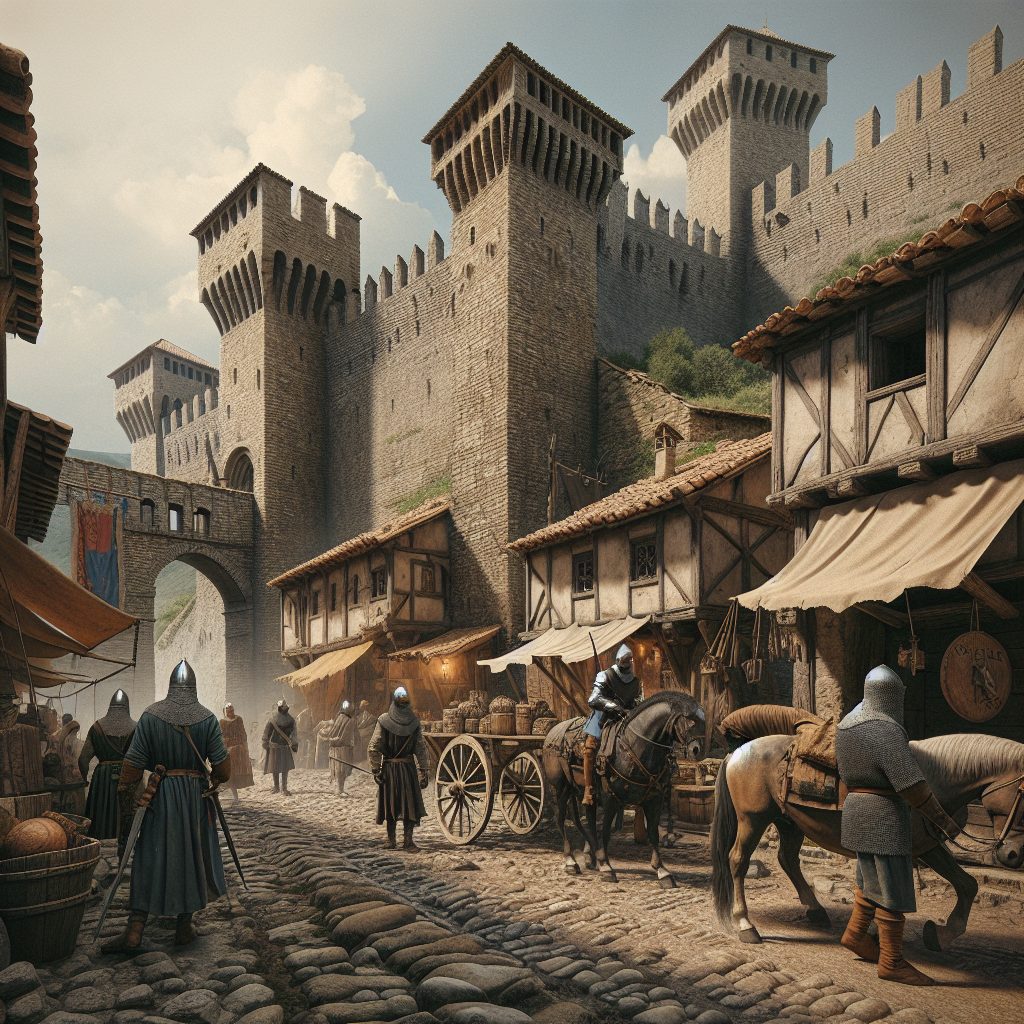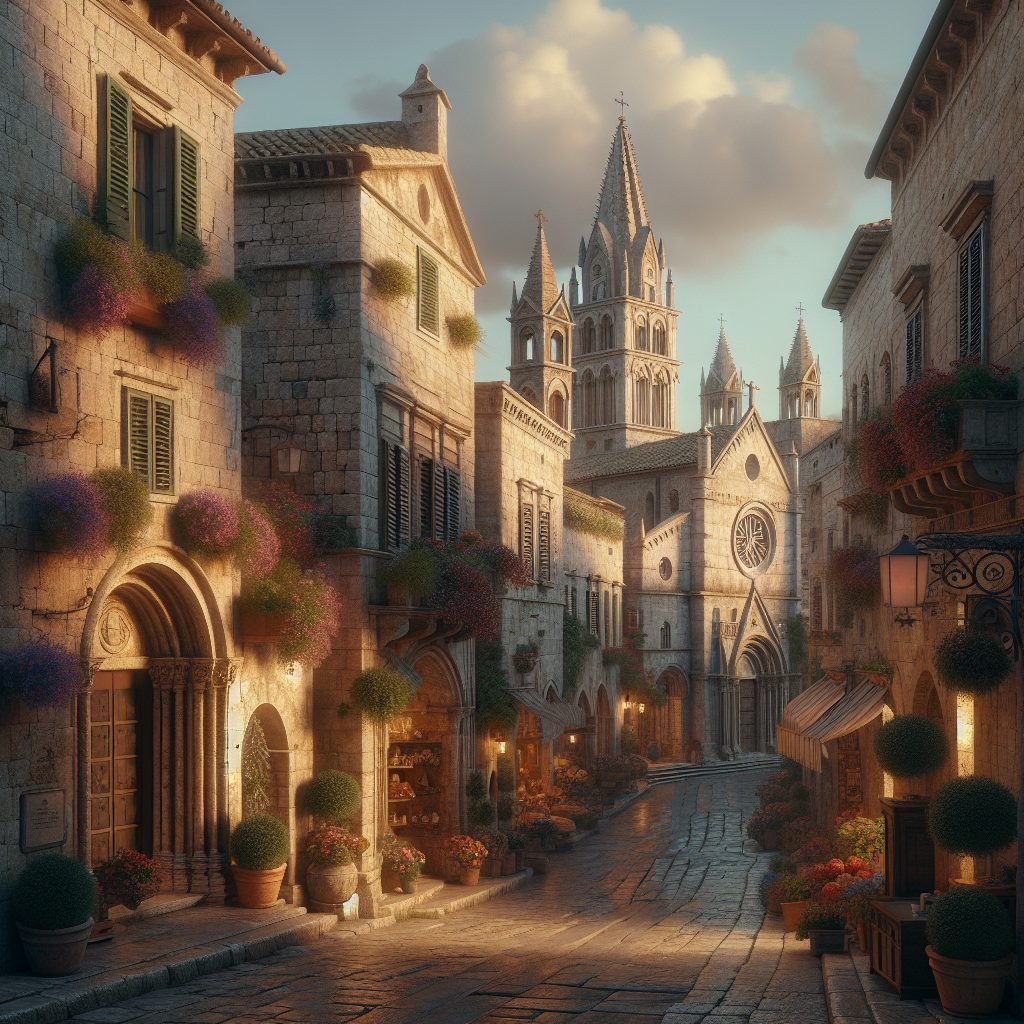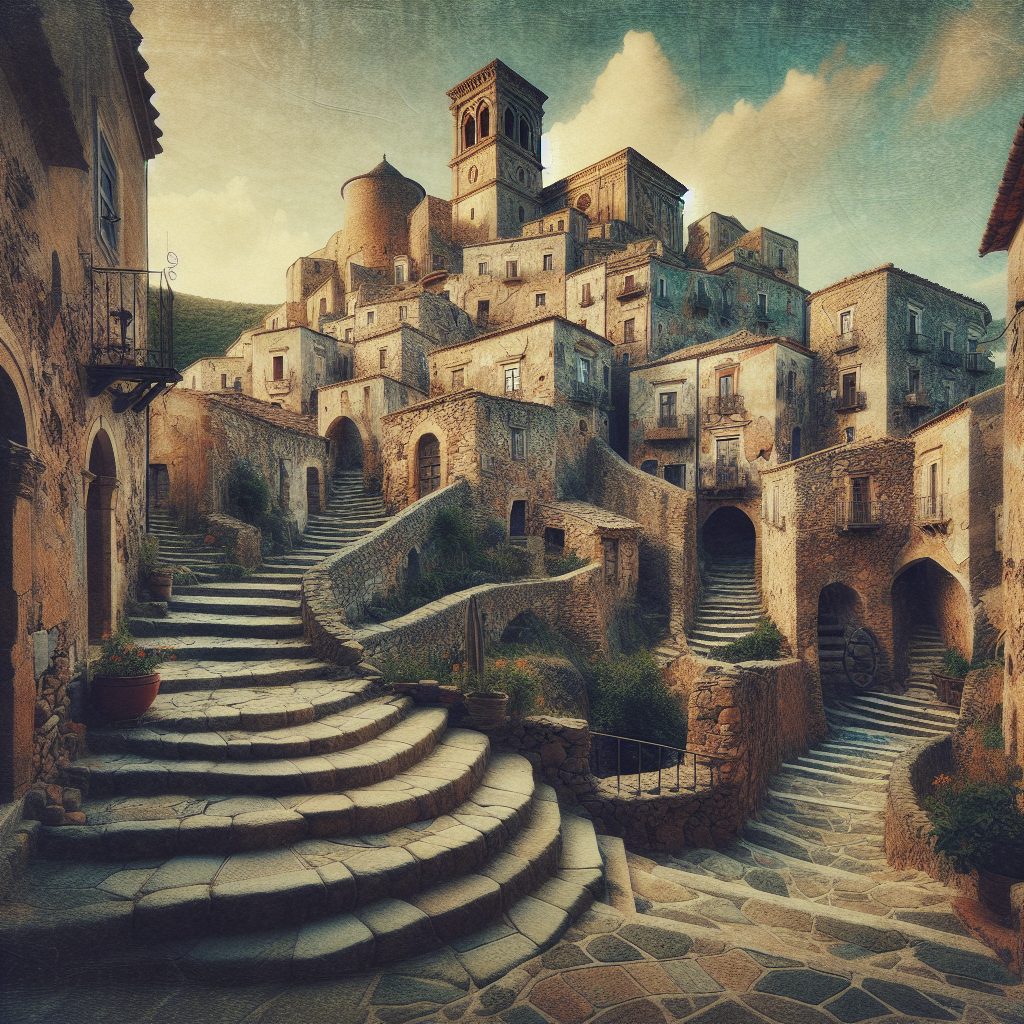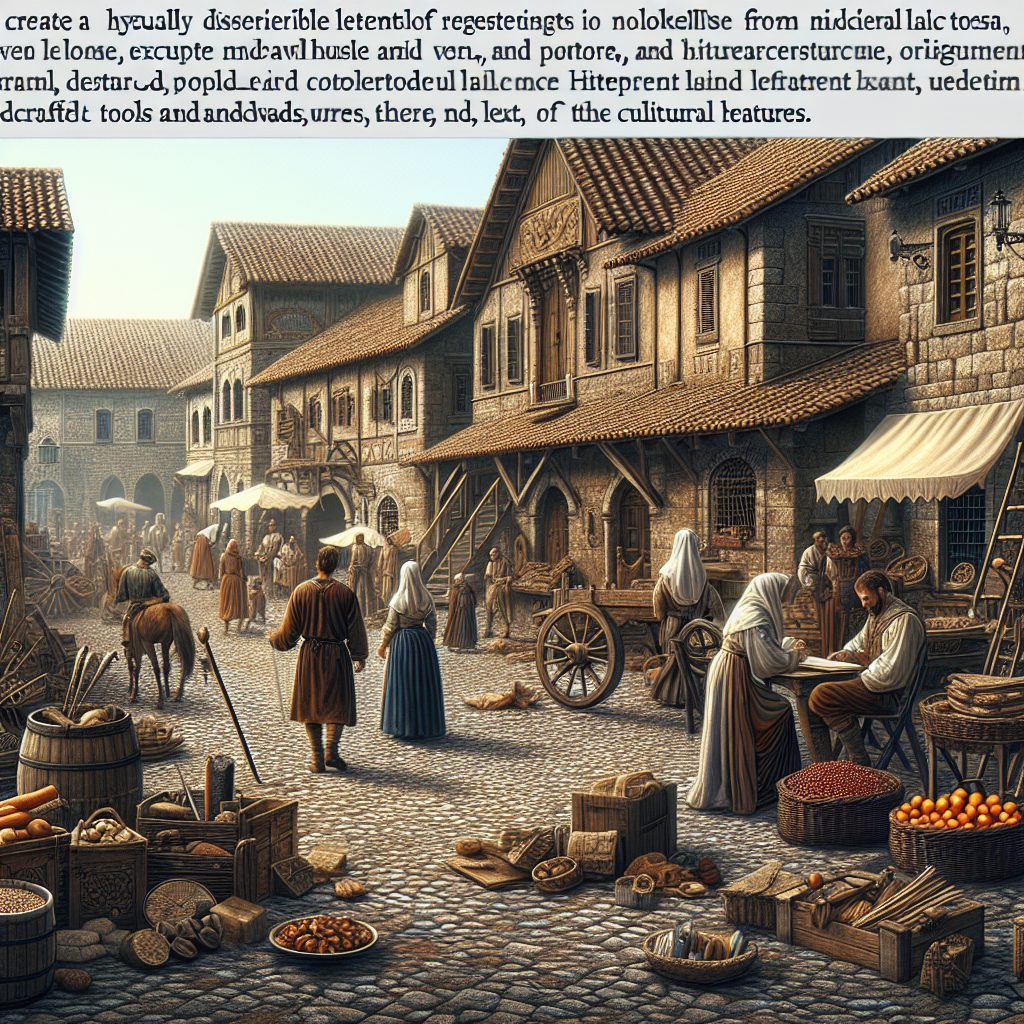Bosa is a medieval town located in the province of Oristano, on the island of Sardinia, Italy. With its cobblestone streets, ancient architecture, and rich history, Bosa offers a glimpse into the captivating world of medieval culture. Dating back to the 11th century, Bosa has retained much of its original charm, making it a popular tourist destination for those seeking a taste of the past.
One of the unique features of Bosa is its well-preserved medieval castle, known as Castello Malaspina. This imposing fortress stands proudly on a hilltop, overlooking the town and the enchanting Temo River. The castle not only serves as a stunning architectural landmark but also houses a museum that showcases artifacts from the medieval era, providing visitors with a deeper understanding of the town’s vibrant history. Additionally, Bosa is renowned for its colorful houses, adorned with intricate frescoes and balconies overflowing with blooming flowers, adding a touch of charm to the medieval streets.
In the upcoming sections, we will delve deeper into the key takeaways of Bosa’s medieval culture. We will explore the town’s fascinating historical background, outlining the various influences that shaped its unique identity. Furthermore, we will discuss the impact of medieval culture on the local economy, tourism, and the preservation efforts in place to ensure Bosa’s medieval heritage endures for generations to come. So, let’s embark on a journey through time, as we uncover the treasures and tales of Bosa’s medieval past.
Key Takeaways
1. Bosa Medieval Town is a charming and well-preserved medieval settlement located in Sardinia, Italy. It offers visitors an authentic glimpse into medieval culture with its winding streets, ancient architecture, and historical landmarks.
2. The town’s medieval culture is evident in its impressive 12th-century castle, Castello di Serravalle, which proudly stands atop a hill overlooking Bosa. This fortress exemplifies the military and strategic importance of medieval towns and provides stunning views of the surrounding landscape.
3. Bosa’s medieval culture is further showcased in its beautiful churches, such as the Cathedral of the Immaculate Conception. These religious buildings feature intricate frescoes, ancient artifacts, and architectural styles that reflect the spiritual and artistic practices of medieval times.
4. Visitors to Bosa can experience the medieval culture firsthand by walking through the narrow, cobblestone streets lined with traditional houses and vibrant buildings. The town’s colorful facades and charming shops create a picturesque atmosphere that transports visitors back in time.
5. Bosa Medieval Town also offers various cultural events and festivals that celebrate its medieval heritage. The annual “Corsa degli Scalzi” is a particularly interesting event, where participants race barefoot through the streets in honor of a historical event that occurred in the town centuries ago. These cultural celebrations provide a unique opportunity to fully immerse oneself in the medieval ambiance of Bosa.
What is the medieval culture of Bosa Medieval Town?
History of Bosa Medieval Town
Bosa Medieval Town holds a rich history that dates back to the medieval times. This section will delve into the origins of the town, its development during the medieval period, and its significance in the region.
Architectural Marvels
One of the prominent aspects of Bosa Medieval Town’s culture is its remarkable architecture. This section will explore the diverse architectural styles found in the buildings, including the impressive Bosa Castle, the Church of San Pietro Extramuros, and the stunning medieval towers scattered throughout the town.
Traditional Festivals and Celebrations
The medieval culture of Bosa Medieval Town is greatly celebrated through various traditional festivals and events. In this section, we will discuss the popular festivals such as the Carnival of Bosa, the Feast of the Assumption, and the Medieval Reenactments, which transport visitors back to the medieval era.
Local Traditions and Crafts
The medieval culture of Bosa Medieval Town is also reflected in its local traditions and crafts. From traditional weaving and pottery to unique culinary practices, this section will shed light on the cultural heritage that has been passed down through generations.
Medieval Cuisine and Gastronomy
Food plays a significant role in any culture, and Bosa Medieval Town is no exception. This section will explore the medieval cuisine and gastronomy of the town, highlighting traditional dishes, ingredients, and cooking techniques that have been preserved over the centuries.
Nature and Surroundings
While the focus is on medieval culture, Bosa Medieval Town’s natural surroundings greatly contribute to its charm. This section will delve into the breathtaking landscapes, nearby beaches, and hiking trails that visitors can explore to complement their medieval cultural experience.
1. How to Immerse Yourself in Bosa Medieval Town’s Medieval Culture?
2. Five Must-Try Traditional Dishes in Bosa Medieval Town
3. Exploring the Architectural Gems of Bosa Medieval Town
4. Captivating Festivals and Events in Bosa Medieval Town
5. Unveiling the Local Crafts and Traditions of Bosa Medieval Town
Remember, no introduction or conclusion headings are to be included.
Frequently Asked Questions
1. What is Bosa Medieval Town?
Bosa Medieval Town is a historic town located on the west coast of Sardinia, Italy. It is renowned for its well-preserved medieval architecture and rich cultural heritage.
2. How old is Bosa Medieval Town?
Bosa Medieval Town dates back to the 12th century, making it over 800 years old. Its medieval origins are reflected in the narrow alleys, stone buildings, and ancient fortifications.
3. What are the main attractions in Bosa Medieval Town?
Some of the main attractions in Bosa Medieval Town include the Castle of Serravalle, the Church of San Pietro Extramuros, the Malaspina Castle, and the ancient city walls. Visitors can also explore the charming historic center with its traditional houses and picturesque streets.
4. Is Bosa Medieval Town a UNESCO World Heritage Site?
No, Bosa Medieval Town is not currently designated as a UNESCO World Heritage Site. However, its historical and cultural significance has led to its recognition as a valuable heritage site by the Italian authorities.
5. Can visitors access the castle in Bosa Medieval Town?
Yes, visitors can access the Castle of Serravalle in Bosa Medieval Town. It offers panoramic views of the town and the Temo River. However, certain areas of the castle may not be accessible to the public due to ongoing preservation and restoration work.
6. Are guided tours available in Bosa Medieval Town?
Yes, there are guided tours available in Bosa Medieval Town. These tours provide insightful information about the town’s history, culture, and architectural highlights. Local guides share interesting anecdotes and stories, enhancing the visitor’s experience.
7. Are there any festivals or events held in Bosa Medieval Town?
Yes, Bosa Medieval Town hosts several festivals and events throughout the year. The most famous event is the Bosa Carnival, which showcases vibrant parades, traditional costumes, and music. Additionally, the town celebrates religious festivals and cultural events that attract both locals and tourists.
8. Can visitors sample local cuisine in Bosa Medieval Town?
Absolutely! Bosa Medieval Town is known for its delicious Sardinian cuisine. Visitors can enjoy traditional dishes such as malloreddus, culurgiones, and seada in the local restaurants and trattorias. The town’s charming atmosphere adds to the dining experience.
9. Is Bosa Medieval Town suitable for a day trip?
Yes, Bosa Medieval Town can be explored thoroughly in a day trip. Its compact size allows visitors to discover its main attractions and soak up the medieval atmosphere in a relatively short time. However, staying overnight allows for a more relaxed and immersive experience.
10. How can I reach Bosa Medieval Town?
Bosa Medieval Town is well connected by road. It is approximately 45 kilometers from the nearest airport in Alghero, and 145 kilometers from the capital city of Cagliari. Buses and taxis are available for transportation within the town.
Final Thoughts
Exploring Bosa Medieval Town is like stepping back in time, where medieval culture comes alive through its ancient architecture and timeless traditions. The town’s well-preserved charm and rich history offer a unique experience for visitors seeking to immerse themselves in Sardinia’s past.
From wandering through its enchanting narrow streets to marveling at the imposing castles and churches, Bosa Medieval Town offers a captivating journey into medieval times. Whether influenced by the diverse architectural styles or tempted by the tantalizing flavors of Sardinian cuisine, this hidden gem is a must-visit destination for history enthusiasts and curious travelers alike.




